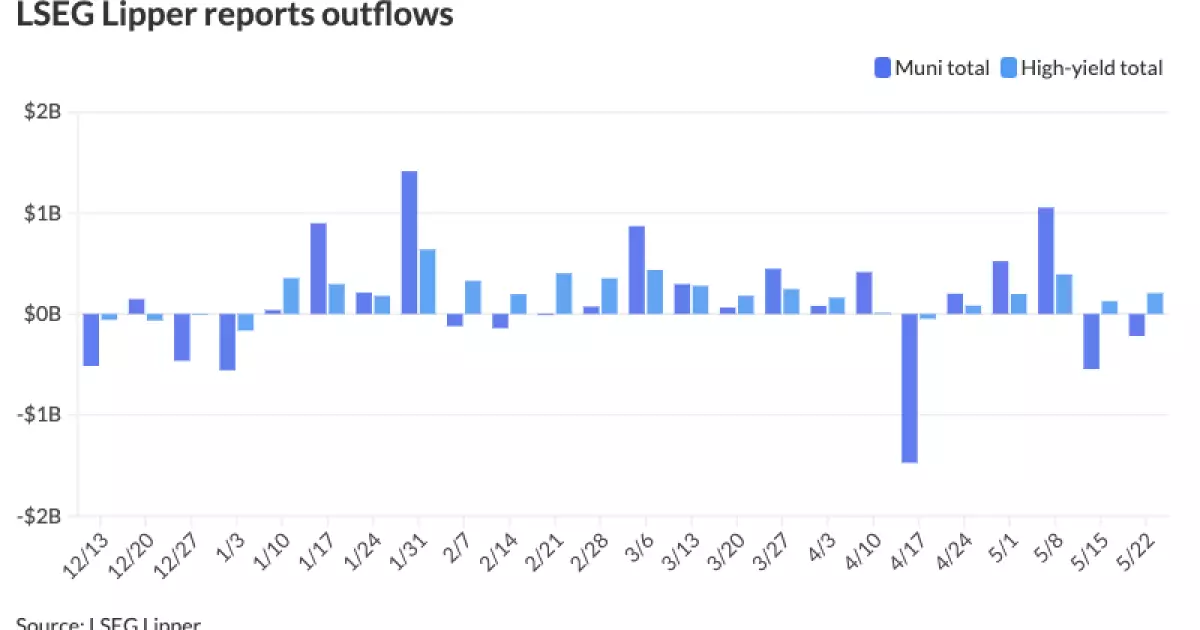The municipal bond market experienced a significant sell-off, mirroring losses in U.S. Treasuries and equities. This correction comes as the summer reinvestment season approaches, with outflows from municipal bond mutual funds for the second consecutive week. Notably, high-yield bonds continued to perform well amidst the overall market decline.
Analysts suggest that the primary reason behind the sell-off is the oversupply in the market, with consecutive weeks of high supply levels putting downward pressure on prices. Fund inflows have also been described as “anemic,” leading institutional investors to remain cautious and avoid significant purchases in the current environment.
Looking ahead, analysts anticipate heavy issuance levels throughout the summer and into early fall as issuers look to enter the market before the November elections. Historical data shows that June has not been favorable to tax-exempt investors, with widening muni-UST ratios in recent years. This, combined with subdued fund flows and potential redemptions, paints a challenging picture for the muni market in the coming months.
Despite the recent correction, muni ratios are still considered rich compared to historical levels, prompting some investors to adopt a cautious approach. Analysts recommend waiting for more attractive entry points in the future, particularly if 10-year ratios fall into the low 70s. The long end of the curve is seen as more vulnerable at the moment, emphasizing the importance of strategic decision-making in the current market environment.
In the primary market, there have been notable bond issuances, such as Corpus Christi, Texas, pricing utility system senior lien revenue improvement and refunding bonds. These developments, along with adjustments in various yield scales, reflect the ongoing dynamics within the municipal bond market amidst broader market trends.
While the recent Federal Open Market Committee meeting minutes did not have a significant impact on the market, they revealed a nuanced view on policy direction. Despite Fed officials mentioning a willingness to tighten policy further if inflation risks materialize, Chair Jerome Powell ruled out a rate hike in the near term. The overall tone of the FOMC remarks has been somewhat hawkish, indicating a cautious approach to monetary policy moving forward.
The muni market correction highlights the challenges and uncertainties facing investors in the current economic landscape. With supply pressures, muted fund inflows, and potential market fluctuations, it is essential for investors to carefully assess their strategies and adapt to changing market conditions. By staying informed and proactive, investors can navigate the complexities of the muni market and capitalize on opportunities as they arise.

